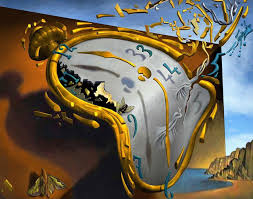Title: ‘Salvador Dalí: The Symbolism Behind the Melting Clocks’
Introduction:
Salvador Dalí, one of the most influential surrealist artists, is known for his fascinating and unusual works of art. One of his most iconic images is the melting clocks, prominently featured in his famous 1931 painting The Persistence of Memory. In this blog we will delve deeper into the meaning of the melting clocks and examine why this symbol has made such a lasting impression on the art world.
Time as a Malleable Concept:
Dalí did not consider time to be something fixed or linear. For him, the value and meaning of time was changeable and dependent on the context. In the dream world, which is central to much of his work, time could be completely distorted. The melting clocks in his paintings symbolise the fluidity and elusiveness of time. They express that in this alternative reality, time has no fixed form and that the concept of time can fade and even melt away.
The Absence of Meaning:
In The Persistence of Memory, the melting clocks also represent the absence of an objective meaning to time. Dalí suggests that time does not have a clear, unchanging value, but is rather intangible and subjective. The desolate, empty landscape in which the clocks are located reinforces this feeling of alienation and disorientation. This evokes the idea that time is a fluid, personal experience that cannot be captured in traditional terms.
The Dream World:
Dalí's melting clocks fit perfectly within his surrealist style, which centres on dreamlike and irrational images. According to Dalí, true reality can be found in the world of dreams, where time has no limitations. The melting clocks symbolise the transition from fixed, logical reality to the unpredictable world of dreams, where the laws of time and space are suspended.
Resistance Against the Establishment:
The melting clocks can also be seen as an act of resistance against the rigid structure of society and the unshakeable rhythm of time. Dalí consciously challenged the prevailing norms and values and wanted to invite his audience to see the world through a different lens. By melting the clocks, he created a visually shocking image of time that questions the traditional understanding of it and urges us to reconsider our views on time, and even reality itself.
Conclusion:
The melting clocks in Dalí's artworks are more than just visual surprises; they represent the flexibility and elusiveness of time. They symbolise the relativity of time and challenge us to rethink the strict, socially accepted views on time. With this iconic image, Dalí left a lasting impact on the art world and reminded us that time is not a fixed given, but a subjective experience that can always change and fade.







